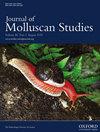Reproductive cycle, fecundity and growth of the freshwater mussel Unio tumidus (Bivalvia: Unionidae) from Lake Viinijärvi, Finland
IF 1.2
4区 生物学
Q2 MARINE & FRESHWATER BIOLOGY
引用次数: 0
Abstract
Freshwater mussels have a substantial role in aquatic ecosystem function and provide valuable ecosystem services, including water filtration, nutrient cycling, habitat creation and sediment stabilization. While they face population declines globally that can negatively affect an ecosystem's health, such as reducing the water quality and increasing the turbidity, lack of information about the basic reproductive biology for most species makes their conservation much more difficult. Here, we monitored a population of Unio tumidus for a year to study its reproductive biology, gonad-dwelling parasites and growth rate in Lake Viinijärvi, Finland. Our data revealed that this species was dioecious with no evidence of hermaphroditism and was non-significantly female-biased (a male to female ratio of 1:1.3). Both sexes of U. tumidus had continuous gametogenesis during the study period with two peaks in the gonadosomatic index (GSI%) during November and May, followed by two clear declines in December and June. Gravidity period (brooding) of embryos or glochidia in the female's outer gills lasted from June to July. Therefore, this population of U. tumidus can be classified as a short-term breeder (tachytictic). The clear decline of GSI% in December might be a strategy that individuals of U. tumidus use to resorb resources back from the gonad for somatic maintenance during winter. Mean length of glochidia was 391 ± 0.049 µm, being among the largest known glochidia for Unionidae. No gonad-dwelling trematode parasites were detected and the population exhibited high fecundity (numbers of oocytes per female), with an average oocyte production of 242,000 ± 18,000. The studied population had a moderate growth rate with a maximum predicted age of 13 years and asymptotic length (the length at which growth slows down while the mussel continues to age, L∞) of 114 mm. Our study provides the first quantitative data and histological analysis of the reproductive biology of U. tumidus, serving as a basis for future research and conservation.芬兰 Viinijärvi 湖淡水贻贝 Unio tumidus(双壳类:Unionidae)的繁殖周期、繁殖力和生长情况
淡水贻贝在水生生态系统功能中发挥着重要作用,并提供宝贵的生态系统服务,包括水过滤、营养循环、创造栖息地和稳定沉积物。虽然它们在全球范围内都面临着种群数量下降的问题,这可能会对生态系统的健康产生负面影响,如降低水质和增加浑浊度,但由于缺乏有关大多数物种基本繁殖生物学的信息,使得它们的保护工作变得更加困难。在这里,我们对芬兰维尼耶尔维湖中的乌尼乌鱼种群进行了为期一年的监测,以研究其生殖生物学、性腺寄生虫和生长速度。我们的数据显示,该物种雌雄异体,没有雌雄同体的迹象,而且雌性偏多(雌雄比例为 1:1.3)。在研究期间,乌龟的雌雄配子均持续发生,生殖腺指数(GSI%)在 11 月和 5 月达到两个高峰,随后在 12 月和 6 月出现两个明显的下降。胚胎或钩毛体在雌体外侧鳃中的孕育期(育雏)从 6 月持续到 7 月。因此,该乌龟种群可归类为短期繁殖种群(快速繁殖种群)。12月份GSI%的明显下降可能是瘤鲤个体在冬季从生殖腺中吸收资源以维持体质的一种策略。球虫的平均长度为 391 ± 0.049 µm,是已知的乌贼中最大的球虫之一。未检测到寄生于生殖腺的吸虫,该种群具有高繁殖力(每只雌鱼的卵母细胞数量),平均卵母细胞产量为 242,000 ± 18,000。所研究的种群生长速度适中,最大预测年龄为 13 岁,渐进长度(贻贝继续老化时生长速度减慢的长度,L∞)为 114 毫米。我们的研究首次提供了贻贝繁殖生物学的定量数据和组织学分析,为今后的研究和保护提供了依据。
本文章由计算机程序翻译,如有差异,请以英文原文为准。
求助全文
约1分钟内获得全文
求助全文
来源期刊

Journal of Molluscan Studies
生物-动物学
CiteScore
3.00
自引率
8.30%
发文量
36
审稿时长
3 months
期刊介绍:
The Journal of Molluscan Studies accepts papers on all aspects of the study of molluscs. These include systematics, molecular genetics, palaeontology, ecology, evolution, and physiology. Where the topic is in a specialized field (e.g. parasitology, neurobiology, biochemistry, molecular biology), submissions will still be accepted as long as the mollusc is the principal focus of the study, and not incidental or simply a convenient experimental animal. Papers with a focus on fisheries biology, aquaculture, and control of molluscan pests will be accepted only if they include significant advances in molluscan biology. While systematic papers are encouraged, descriptions of single new taxa will only be considered if they include some ‘added value’, for example in the form of new information on anatomy or distribution, or if they are presented in the context of a systematic revision or phylogenetic analysis of the group.
 求助内容:
求助内容: 应助结果提醒方式:
应助结果提醒方式:


